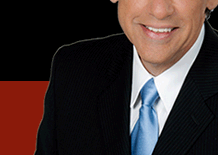|
August 7, 2005
One of the most fascinating stories to come along in a long
time is the
one involving the rather historic break-up of the largest
labor union
organization in America, the AFL-CIO. The move has spooked
some
Democratic Party leaders and the ranks of organized workers,
their
futures now in the hands of labor rebels who bolted the 50-year-old
federation vowing to reverse the steep decline in union membership.
Most of us who have ever worked in the electronic media or
entertainment, especially in larger urban markets, have been
members of
either AFTRA (American Federation of Television and Radio
Artists), or
SAG (Screen Actors Guild). If you have worked behind the scenes
in
craft world, you may have been a member of the IBEW (International
Brotherhood of Electrical Workers, or perhaps IATSE (International
Alliance of Theatrical Stage Employees).
My past also includes membership in the Los Angeles Newspaper
Guild and
the United Industrial and Cannery Workers Union, when I packed
four-pound tuna cans into boxes and washed down the gutters
of the old
fish canneries in L.A. Harbor many years ago. In fact, I come
from a
strong union family and my Dad retired as a vice president
of the
Cannery Workers Union and Seafarers International, so I understand
what
labor is all about. It's in my blood, yes, my dues-paying
Republican
blood.
Much of labor has lost its path in recent years and the bitter
clash of
personalities and agendas split labor into rival camps, as
two big
unions, the Teamsters and the Service Employees International
Union
(SEIU), the country's largest union, broke from the AFL-CIO
(American
Federation of Labor - Congress of Industrial Organizations)
to start
their own federation, the 'Change to Win Coalition.' At least
two more
unions - the United Food and Commercial Workers and Unite
Here, a union
of hospitality and textile workers ' are also breaking away.
And this
is probably just the beginning.
This is costing the AFL-CIO about a third of its 13 million
members and
will significantly strain its budget. The AFL-CIO already
has had to
lay off a quarter of its Washington staff. The SEIU and Teamsters
alone account for more than $20 million of an estimated $120
million
AFL-CIO budget. That's a sizable chunk.
A lot of people don't seem to understand the break-up, but
the
dissidents who left, and some analysts, say the split will
spark
competition, a new devotion to unionizing, and eventually,
more clout
to help working people at the workplace and in politics.
The split is simple to explain. The average union workers,
I like to
call them 'Joe and Sally Six-Pack', got tired of having their
union
dues spent on national elections or in other states instead
of using
the money to strengthen the labor movement closer to home,
increase
membership, and make local unions stronger.
Andy Stern, the president of the SEIU, the first to bolt
the AFL-CIO,
amplified that point by saying, "Our goal is not to divide
the labor
movement, but to rebuild it."
Instead of listening to the workers on the street, the national
and
international bigwigs more and more began playing fat cats
with
politicians and the leaders of business they were supposed
to
challenge. They also were lining their pockets, forgetting
about the
workers on the front lines and their needs.
Some of the biggest problems can be traced directly to John
Sweeney,
the American Federation of Labor's portly president, who was
elected 10
years ago as the 'reform' candidate. Imbued with a bureaucratic
leadership style, Sweeney's method of solving problems was
to create
still another initiative, strategic group, study committee
and new
staff positions, while ignoring proposals from dissident union
members.
This is a bad way to do business with people who are paying
you to
save their jobs, get them better wages and benefits, and keep
jobs from
going non-union or overseas.
Sweeney's elaborate efforts of study committees and new staffers
did
not prevent a series of expensive organizing failures that
were kept
secret from the membership. But what Sweeney could not hide
was that
during his 10-year tenure as AFL-CIO president, labor's percentage
of
the nation's work force had dropped from 14.2%, when he took
office, to
12.5%, with a meager 7.8% of those jobs being in the private
sector.
And there was absolutely no significant legislative accomplishment
for
the millions of dollars that the unions had spent on an agenda
for
working families.
Even Sweeney's supporters concede that he is a bust as a
public speaker
in an age where television and even the Internet demand more
charisma
and charm. In the rare times Sweeney has appeared on a national
talk
show, he comes across as a dull personality with a monotone
voice and
few interesting things to say to a national audience. He lacks
wit and
charm, and seems unable to respond to a tough question with
a wisecrack
or a clever one-liner. He simply does not do well at communicating
both the woes and aspirations of working families. That's
probably why
he shuns many opportunities to appear before the public to
promote
labor's message.
His speeches are a total bore. He's guilty of constantly
delivering
his messages loaded with horrific bureaucratic jargon, with
rarely a
humorous comment that might evoke a smile. He never alludes
to a great
philosopher, scientist, poet, painter or historical figure.
Indeed,
the impression is that he doesn't read much of anything except
staff
reports and memos. Does he have any cultural interests' He
has never
exhibited any.
Yet, Sweeney felt he deserved to be re-elected to another
four-year
term as AFL-CIO president and guess what' He won. He already
had the
50% of the convention votes he needed to win. What that means
is that
eight or ten of the presidents of the big unions, who each
cast
hundreds of thousands of convention votes, were committed
to giving him
their support to seal his victory.
Ordinary union members, of course, have no voice at the annual
AFL-CIO
conventions. It is doubtful whether Sweeney could ever muster
more
than 3% of the votes if the AFL-CIO elected its president
in a
nationwide election, because he is not well-known or well-liked
by the
rank and-file.
The remarkable thing is that, at least until this split came
along,
there was never a single labor leader, knowing all of Sweeney's
shortcomings, who had the proverbial 'huevos' to oppose him.
For a
while, the dissident group of union presidents was grooming
one of
their own, John Wilhelm, the head of UNITE-HERE, a merged
union of
garment and hotel workers, but Wilhelm held off, after counting
noses
and finding he could get only about 35% of the vote.
The thought of Sweeney's impending re-election was the last
straw for
Andy Stern at the SEIU, who had been threatening to pull out
of the
AFL-CIO for many months and now made it fairly certain that
he would
bolt, taking as many unions as he could into a new labor federation.
Stern was joined by his recently-acquired ally, Douglas McCarron,
president of the 500,000-member Brotherhood of Carpenters,
who has a
well-founded reputation as one of the worst autocrats in the
labor
movement.
They both saw the writing on the wall, that working families
realized
that public sector jobs were not the answer because the taxpayers
keep
a close watch on government growth and the trend has been
for smaller
government and lower taxes, especially among union workers
who were
being asked to fund higher government salaries and pension
funds from
union paychecks that were shrinking and disappearing.
As American companies shut down factories in the U.S. and
took
formerly-union jobs out of the country, U.S. labor movement
supporters
demanded hard answers. They never came. In addition to globalization
issues, there was the ever-increasing use of automation and
the
transition from an industrial-based economy that forced hundreds
of
thousands of unionized workers out of jobs, weakening labor's
role.
And while this is the biggest rift in organized labor since
1938, when
the CIO split from the AFL, supporters of the breakup note
that labor
made big gains when the two groups competed. One of every
three
private-sector workers belonged to a labor group when the
AFL and the
CIO merged in the 1950s. Now, less than 8 percent of private-sector
workers are unionized.
The SEIU's Stern says the split 'represents not an accomplishment,
but
simply an enormous opportunity, and a recognition that we
are in the
midst of the most rapid transformative moment in economic
history, and
workers are suffering.'
The break-away unions face tough times in making their break-away
efforts succeed. The future of the labor movement could be
greatly
affected by the success or failure of Stern's effort to build
a
coalition outside the AFL-CIO that dedicates more money and
manpower to
recruiting union members while adjusting to demands of the
global
economy.
Some of the people casting a wary eye at the break-away movement
are,
of course, politicians who have been on the receiving end
of that
national union money. Democratic candidates and political
operations
that benefit the Democratic Party have to date, been the largest
beneficiaries of the national union bucks. Stern, Teamsters'
union
boss James Hoffa and their colleagues in the Change to Win
Coalition,
had repeatedly pushed the AFL-CIO to shift focus from such
political
activity to recruiting new union members, contending that
a growing
union movement would naturally increase its political and
bargaining
power.
Hoffa says they were repeatedly rebuffed, 'They said no.
Their idea is
to keep throwing money at politicians.' Sweeney should have
known
better than to ignore guys like Hoffa and Stern. It became
obvious the
little guys in the trenches paying Sweeney and the other `execs
at the
AFL-CIO were going to fight back. They did.
Now we will watch closely to see if Hoffa, Stern and their
buddies
deliver on their promises to the masses or fall prey to the
influence
of the greedy politicians who can't live without their regular
fix of
union money.
This could be another beginning of the end for labor, or
it could be
the first day of the rest of labor's resurgence and a victory
for
helping union workers, instead of lining the pockets of sleazy
politicos and national union bosses like John Sweeney.
|

















